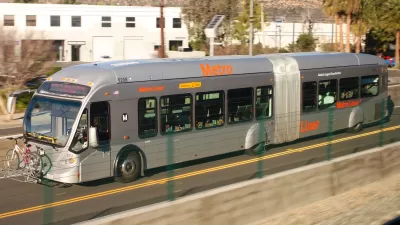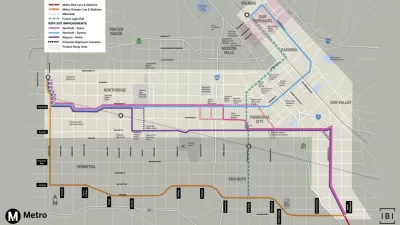The Warner Center 2035 Plan was designed to bring growth to Los Angeles’s San Fernando Valley. If the opening of a $350-million Westfield Village in September is any indication, it’s succeeding.
Los Angeles City Councilmember Bob Blumenfield, who ushered the plan to adoption in 2013, sees his role in this growth as that of a "closer"—working at the city and state levels to create opportunities for development, and then "getting out of the way."
"The biggest city financial tool is subvention," he explains. His own political work concerning subvention moved Westfield’s opening date up by 10 years. Also useful has been the Local Development Corporation (LDC), a fund of mobility fees paid by new developments. Blumenfield is working on a framework for an entity to expend the funds, which are growing as development heats up in the area.
The Warner Center plan addresses a problem all too well known to planners and developers in Los Angeles:
"Previously, the area saw hodgepodge development—wherein everything came to the Council and needed a variance, and every issue was a fight. The plan creates a smoother path… It’s a plan that’s truly a plan."
It also shifts planning away from another quintessential Los Angeles issue: cars. The Valley is notorious for lacking public transportation options, so Blumenfield is working to get Metro to invest in transit capacity. That expectation is baked into the plan:
"The Warner Center 2035 Plan also relies on us thinking differently and not assuming that we have to drive everywhere. The plan envisions more pedestrian-friendly and more bike-friendly development. If you can live, work, and play in an area, you don’t have to get in your car every time."
Blumenfield’s experience with financing tools predates his tenure in the city council. As a state senator, he authored two bills aimed at reforming California Redevelopment Agencies. The full interview in The Planning Report explains how that effort ended with CRAs being eliminated altogether.
FULL STORY: Blumenfield Proud of Warner Center 2035's Blueprint for Growth

Trump Administration Could Effectively End Housing Voucher Program
Federal officials are eyeing major cuts to the Section 8 program that helps millions of low-income households pay rent.

Planetizen Federal Action Tracker
A weekly monitor of how Trump’s orders and actions are impacting planners and planning in America.

Ken Jennings Launches Transit Web Series
The Jeopardy champ wants you to ride public transit.

Washington Legislature Passes Rent Increase Cap
A bill that caps rent increases at 7 percent plus inflation is headed to the governor’s desk.

From Planning to Action: How LA County Is Rethinking Climate Resilience
Chief Sustainability Officer Rita Kampalath outlines the County’s shift from planning to implementation in its climate resilience efforts, emphasizing cross-departmental coordination, updated recovery strategies, and the need for flexible funding.

New Mexico Aging Department Commits to Helping Seniors Age ‘In Place’ and ‘Autonomously’ in New Draft Plan
As New Mexico’s population of seniors continues to grow, the state’s aging department is proposing expanded initiatives to help seniors maintain their autonomy while also supporting family caregivers.
Urban Design for Planners 1: Software Tools
This six-course series explores essential urban design concepts using open source software and equips planners with the tools they need to participate fully in the urban design process.
Planning for Universal Design
Learn the tools for implementing Universal Design in planning regulations.
Heyer Gruel & Associates PA
Ada County Highway District
Institute for Housing and Urban Development Studies (IHS)
City of Grandview
Harvard GSD Executive Education
Toledo-Lucas County Plan Commissions
Salt Lake City
NYU Wagner Graduate School of Public Service





























